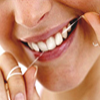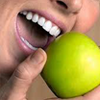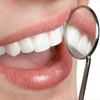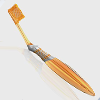
A space between your front teeth can be a cause of distraction to the person you are speaking with. It can divert that person's attention from your face to that defect. Correcting this defect will make it easier for others to maintain eye contact with you.
The cause of spacing may be heredity or some personal habit like tongue thrusting, thumb sucking, abnormal swallowing, etc. Another cause in adults is advanced gum disease, leading to loss of supporting bone and the teeth spreading out. The cause of the spacing can determine the technique used for correction.
Four methods are available for space closure:
- Orthodontics
- Veneers
- Crowns
- Bonding
Gap Closure with Composite Bonding
Dental bonding on the anterior or front teeth is an excellent method for repairing minor imperfections such as chips and stains. It can also be used to fill gaps between the teeth called diastemas. Although no cosmetic dentistry procedure can take the place of good oral and periodontal hygiene, dental bonding can brighten your smile quickly and easily.What are the most common benefits of this procedure?
In dental bonding, a composite resin material is applied to the tooth and then sculpted and shaped to cover damaged areas or to fill in gaps. This material comes in several shades so it can be matched to the natural color of your tooth. Bonding usually requires only one visit, so it is less time-consuming and less expensive than other tooth restoration methods
Bonding can be accomplished in one visit. The length of the visit will depend on the condition of your teeth and on how much repair work you are having done.
To maintain the results achieved by this procedure, it is important to practice good oral hygiene. Follow these steps to care for your teeth after bonding:
- Keep your teeth clean by brushing and flossing regularly.
- Schedule regular professional cleanings by your dentist or dental hygienist.
- Use gentle toothpastes that are safe for bonded teeth. Ask your dentist for recommendations.
- Slice hard foods like apples and carrots before eating them.
- Avoid chewing on hard objects like fingernails, pencils, or paperclips.






